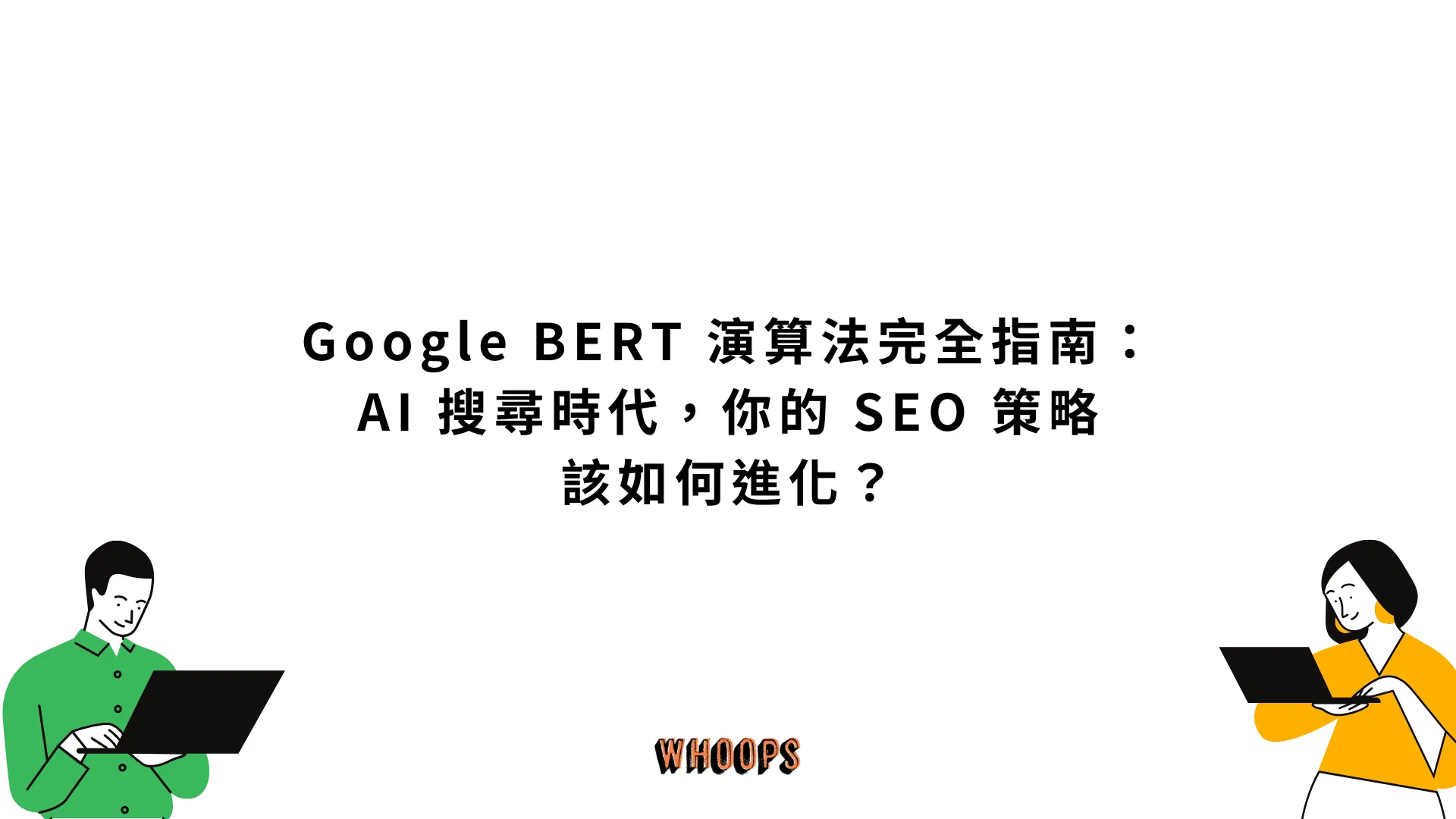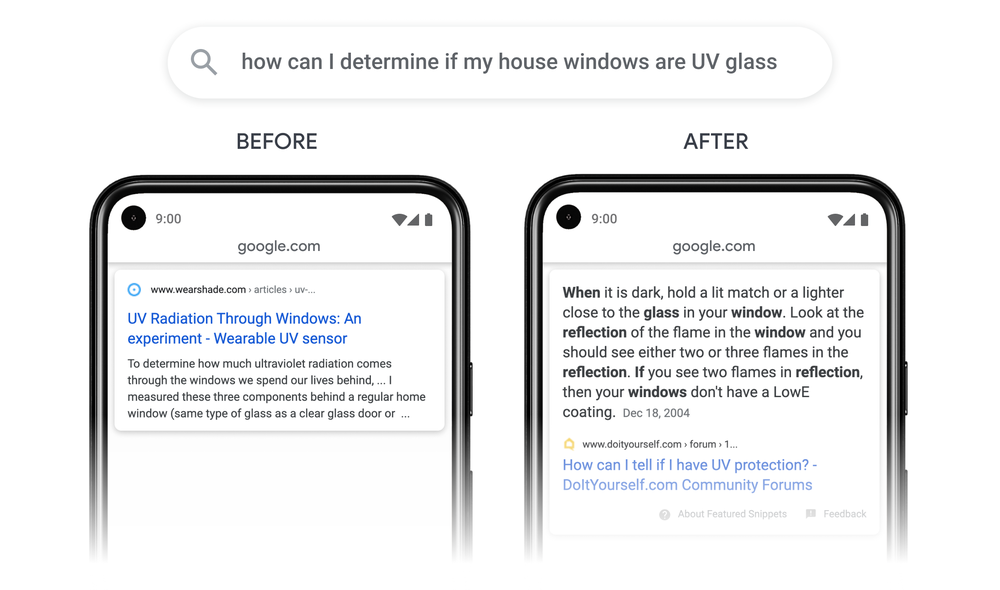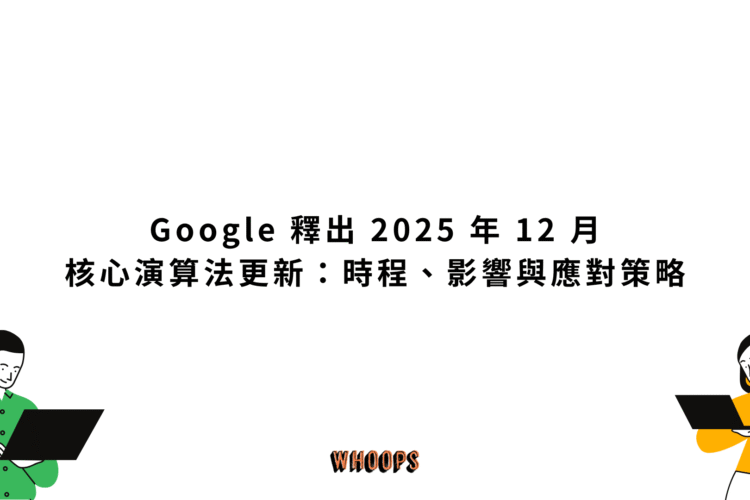
你是否感覺到,現在的 Google 搜尋結果越來越像一個能直接回答你問題的聰明助理,而不只是一排藍色連結?這背後的巨大轉變,很大程度上歸功於一項名為 BERT 的革命性技術。這不只是一次普通的演算法更新,它代表著 Google 搜尋引擎的底層邏輯正在發生根本性的進化。
過去,我們做 SEO,可能更專注於關鍵字匹配和技術優化。但現在,Google 正在以前所未有的深度理解「人類語言」。這意味著,舊有的 SEO 策略正在快速失效。
別擔心,這篇文章不是要告訴你 SEO 變得多困難,而是要帶你深入了解 BERT 演算法的核心,並提供一套清晰、可執行的實戰策略,讓你從容應對 AI 搜尋時代,甚至抓住這次變革的紅利。
文章目錄
什麼是 BERT?為何它能顛覆搜尋規則?
在我們深入探討具體變化之前,讓我們先花一分鐘搞懂 BERT 到底是什麼。
簡單來說,BERT (Bidirectional Encoder Representations from Transformers) 是 Google 開發的一種自然語言處理技術。你可以把它想像成 Google 為其搜尋引擎安裝的「大腦語言中樞」。
在 BERT 出現之前,搜尋引擎在理解我們的查詢時,常常是逐字拆解,就像一個剛學語言的孩子。例如,當你搜尋「台灣飛美國需要簽證嗎」,舊的演算法可能會分別匹配「台灣」、「美國」、「簽證」這些詞,但很難理解它們之間的複雜關係。
BERT 的厲害之處在於它的「雙向」理解能力。它能同時考慮一個詞彙的前後文,真正理解整個句子的完整意圖。它知道「飛往」和「來自」的差別,也明白「沒有」這個詞如何徹底改變一句話的意思。正是這種對語意和上下文的精準把握,才催生了接下來我們要談的四大搜尋革命。
深度解析:BERT 驅動的四大搜尋革命
Google 透過 BERT 和其他 AI 技術,對搜尋體驗進行了四項關鍵升級。了解它們,是你調整策略的第一步。
段落索引:從索引「網頁」到索引「答案」
這可能是影響最深遠的改變。過去,Google 的索引單位主要是「網頁」。如果你的網頁主題符合搜尋,它就有機會排名。但現在,Google 變得更加精細。
Google 現在能直接索引和理解網頁中的「特定段落」。
想像一下,你寫了一篇長達 3000 字的關於「室內植物養護」的完整指南,其中只有一個段落專門講「如何處理黃葉」。在過去,使用者搜尋「室內植物黃葉怎麼辦」,你的文章可能會因為主題相關而出現,但使用者還需要自己進去找答案。
現在,Google 可以直接識別出那個處理黃葉的段落,並將它作為「精選摘要」或直接答案顯示在搜尋結果頁面。這直接影響了搜尋結果頁面(SERP)的樣貌。如果你對 SERP 的組成還不熟悉,可以參考這篇 SERP 完整介紹。
官方說法:「我們最近在排名方面取得了突破,現在不僅能夠索引網頁,還能索引頁面中的個別段落……這項技術將改善全球所有語言中 7% 的搜尋查詢。」
這意味著,你的內容不再是鐵板一塊,而是由許多潛在的「答案單元」組成。

Google 的 AI 現在能理解特定段落的上下文,直接找出藏在文章深處的答案。
次要主題理解:更廣泛、更多元的搜尋結果
當你搜尋一個比較廣泛的詞,比如「家庭健身器材」,你腦中可能還沒想好具體的方向。是想找便宜的?還是不佔空間的?或是專業級的?
Google 現在能透過 AI 理解一個主查詢背後的各種「次要主題」。當你搜尋「家庭健身器材」時,它可能會同時呈現關於「預算型器材推薦」、「小空間健身方案」、「高階器材評比」等相關內容。
官方說法:「我們應用神經網路來理解一個興趣點周圍的次要主題,這有助於在你搜尋寬泛主題時,提供更多元的內容。」
這對內容創作者來說是個好消息。它鼓勵你圍繞一個核心主題,去深入探討所有相關的子主題,建立全面的「主題權威性」。

當你搜尋廣泛主題時,Google 會提供更多元的次要主題,幫助你深入探索。
影片關鍵時刻:讓影片內容也能被「秒搜」
影片內容一直以來都是 SEO 的一個黑盒子。Google 很難理解影片內部到底講了什麼。但現在,情況完全不同了。
借助 AI,Google 現在能夠分析影片的語意,自動識別出影片中的「關鍵時刻」或「章節」,並直接在搜尋結果中標示出來。
例如,一個教你做「紅燒牛肉麵」的影片,Google 能自動標示出「準備食材」、「炒糖色」、「燉煮」等步驟的時間點。當使用者搜尋「紅燒牛肉麵怎麼炒糖色」時,Google 可以直接引導他到影片的 2 分 15 秒處,跳過所有前言。
官方說法:「到 2020 年底,我們預計 Google 上 10% 的搜尋將使用這項新技術。」(註:此技術現已廣泛應用)
這項更新,正式宣告了影片 SEO 進入了「內容為王」的時代,而不僅僅是標題和標籤的優化。

影片搜尋結果現在可以直接跳轉到關鍵章節,大幅提升使用者體驗。
數據洞察普及:讓複雜數據變為即時答案
網路上有海量的統計數據,但它們通常深埋在複雜的報告和資料庫中。Google 正試圖讓這些數據變得觸手可及。
透過與美國人口普查局、世界銀行等機構合作,Google 早在 2018 年就啟動了數據共享計畫(Data Commons Project),建立了一個開放的統計數據知識庫。
現在,當你搜尋如「台北市的人口有多少」這類問題時,Google 能直接從這些權威資料庫中提取數據,並以圖表或卡片的形式清晰地呈現給你,甚至還會提供相關的比較數據,例如其他城市的人口。
這對以數據、新聞和統計為主的網站帶來了巨大挑戰,因為 Google 正在成為這些資訊的「第一入口」。
AI 時代的 SEO 新思維:5 大實戰策略
了解了以上變化,你可能會感到焦慮:「SEO 是不是越來越難做了?」
答案是:傳統的、投機取巧的 SEO 確實越來越難,但真正以使用者為中心的 AI SEO,正迎來最好的時代。
以下是你能立即採取的 5 個實戰策略:
為「問題」而寫,而非為「關鍵字」
忘掉關鍵字堆砌吧。現在你應該問自己:「我的目標使用者會用什麼樣的問題來尋找我的內容?」試著用完整的問句作為你的 H2 或 H3 標題,並在緊接著的段落中給出直接、簡潔的答案。這種寫作方式完美契合了「段落索引」的趨勢。
擁抱長尾,佈局對話式內容
隨著語音搜尋的興起和 BERT 對自然語言的理解,人們的搜尋方式越來越口語化。你的內容策略也應該跟上。與其死磕「健身器材」這種競爭激烈的短尾關鍵字,不如去佈局像「5000 元預算內最推薦的居家健身器材有哪些」這樣的長尾對話式查詢。
結構化你的內容(不只是數據)
為了讓 Google 的 AI 更容易理解你的文章結構,你必須更加重視內容的組織方式。
- 使用清晰的標題層級(H1, H2, H3)。
- 善用項目符號和編號清單來呈現步驟或重點。
- 在文章開頭提供一個「內容摘要」或「重點速覽」。
- 如果內容複雜,考慮使用目錄。
影片 SEO:不只是標題,更是內容腳本
如果你的行銷策略包含影片,現在是時候重新審視你的影片 SEO 了。
- 提供完整的影片文稿:上傳準確的字幕檔(SRT 檔案)。
- 撰寫詳細的影片說明:在說明欄中加入帶有時間戳的章節目錄。
- 口語提及關鍵字:在影片中自然地說出你希望被搜尋到的關鍵詞彙和問題。
建立主題權威,而非單點突破
鑒於 Google 對「次要主題」的理解,單打獨鬥的文章很難再取得優勢。你應該採用「主題集群(Topic Cluster)」模型。選擇一個你希望成為權威的核心主題,然後圍繞它創作一系列深入探討各個子主題的支援性文章,並透過內部連結將它們串連起來。
如果你是剛開始接觸 SEO 的朋友,建議先從學習 SEO 基礎開始,打好穩固的根基。
結論:擁抱語意搜尋,成為最終贏家
Google BERT 演算法的全面應用,不是 SEO 的末日,而是它的一次「返璞歸真」。
它迫使我們所有人停止玩弄技巧,回歸到內容行銷的本質:深刻理解你的目標受眾,並為他們創造真正有價值、能解決問題的內容。
搜尋引擎變得越聰明,就越能獎勵那些真誠幫助使用者的創作者。與其焦慮演算法的變化,不如將精力投入到創造更優質、更深入、更具同理心的內容上。當你的內容真正成為某個領域的最佳解答時,無論演算法如何演進,你都將是最終的贏家。


